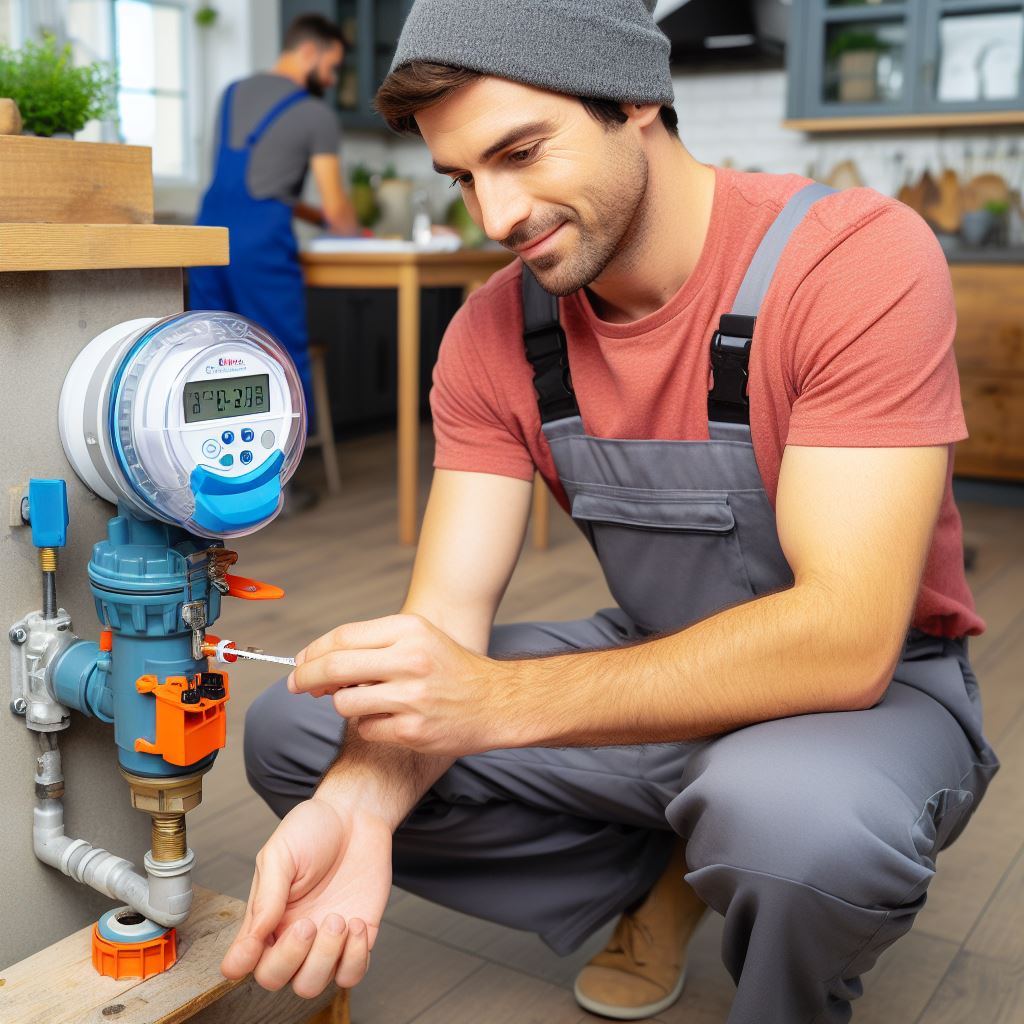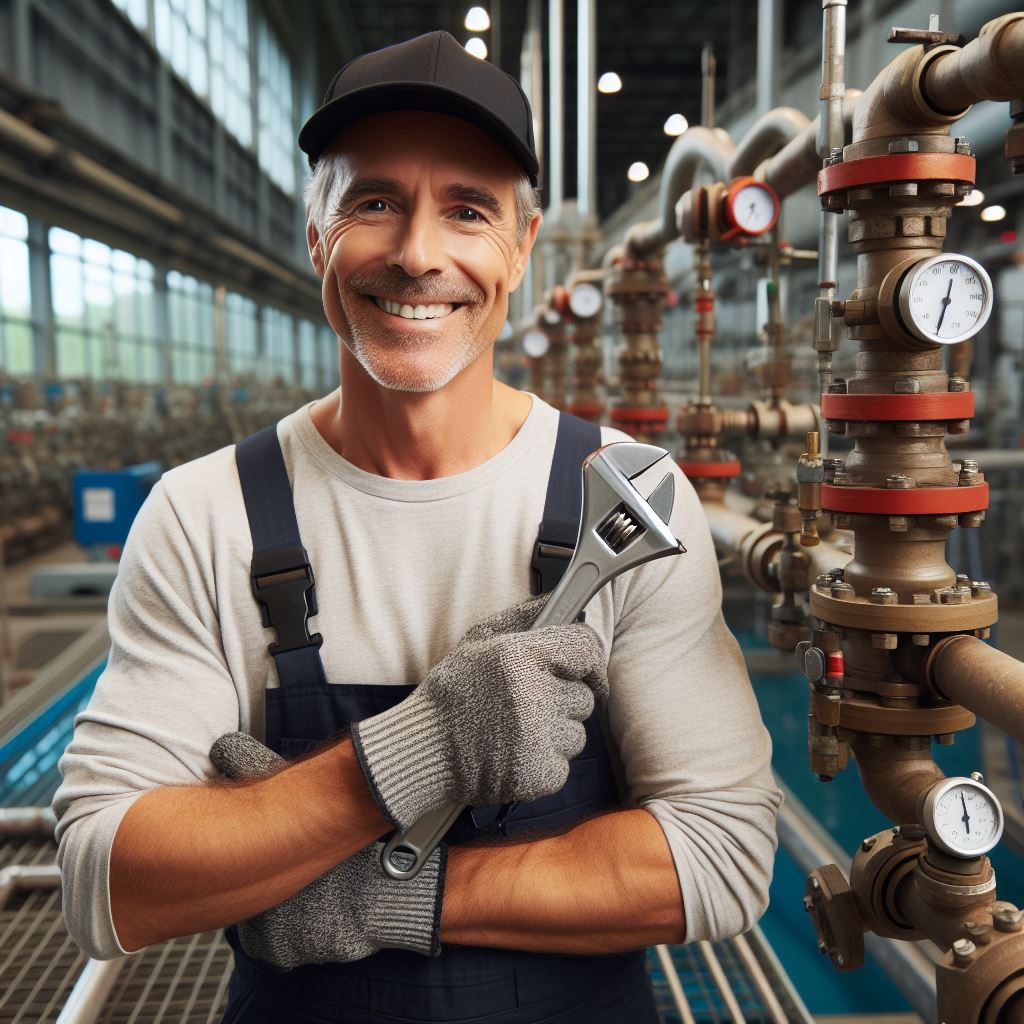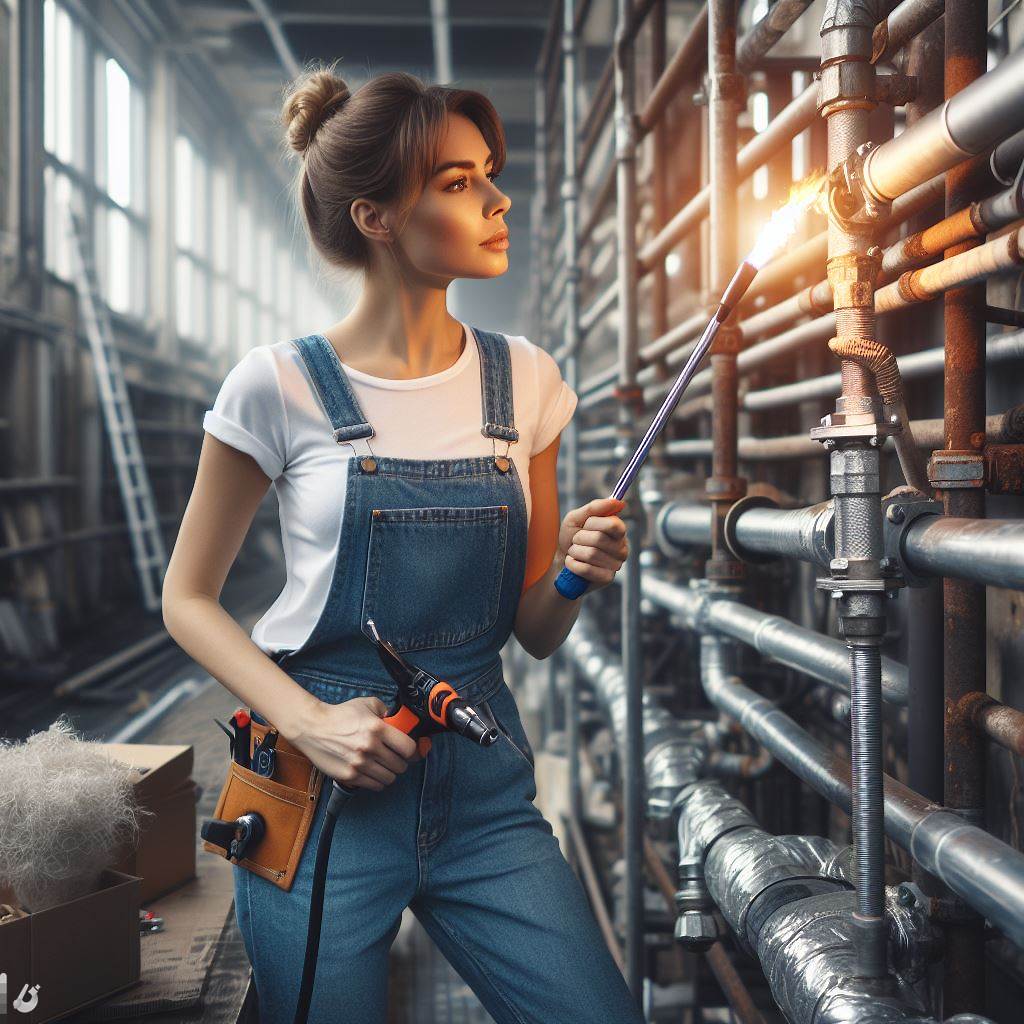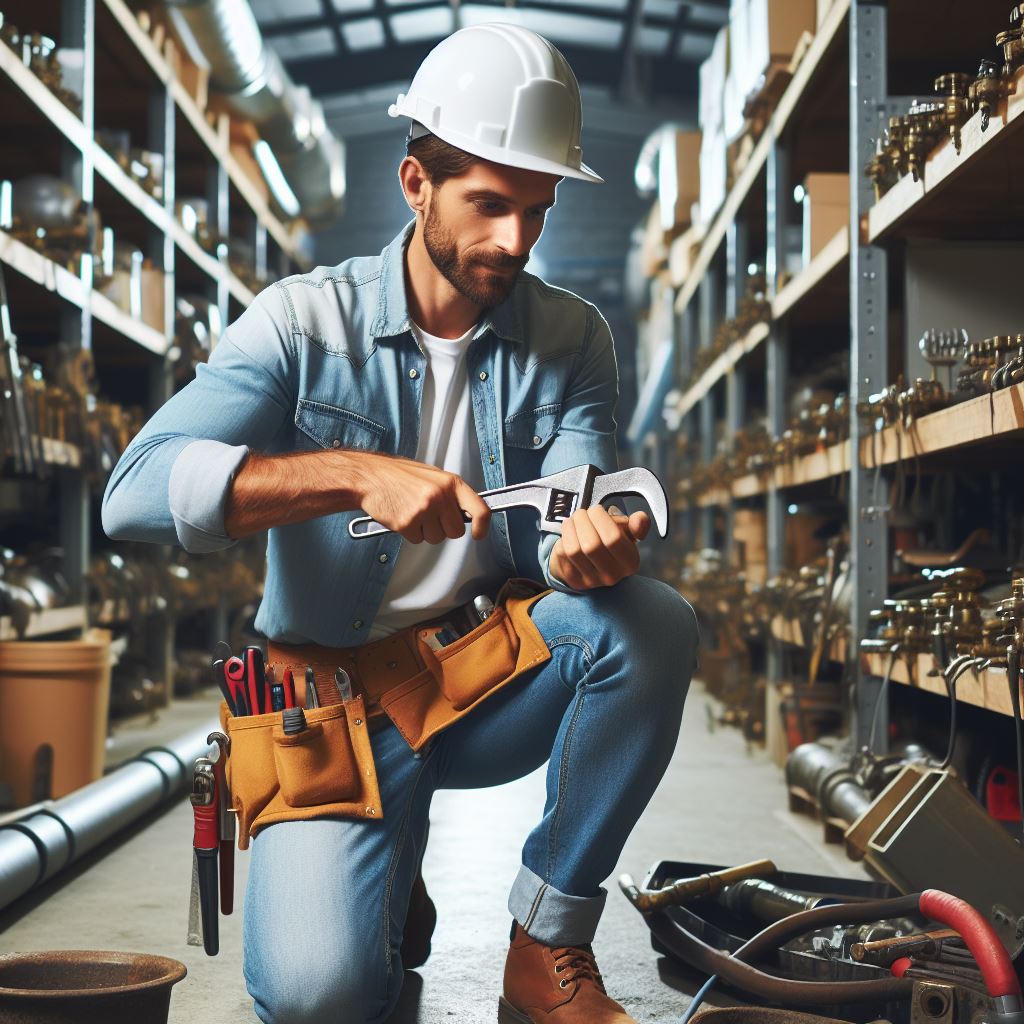Introduction
A. Innovative Plumbing Technologies in Canada
Modernizing plumbing in Canada isn’t just a necessity; it’s a leap into advanced, sustainable infrastructure.
B. Importance of Plumbing Technologies
- Sustainable Practices: Innovations play a pivotal role in promoting eco-friendly plumbing solutions.
- Efficiency Boost: Advanced technologies enhance overall system efficiency, reducing waste and energy consumption.
C. Preview of Key Points
- Smart Water Management: Explore how IoT is transforming water monitoring and conservation.
- Green Plumbing Materials: Dive into eco-friendly materials that are reshaping the plumbing landscape.
- Digital Leak Detection: Uncover the latest in leak detection technologies for proactive maintenance.
- Energy-Efficient Heating: Discuss innovations in water heating systems, promoting both comfort and sustainability.
This blog section unveils the dynamic realm of plumbing innovations in Canada, from smart water management to eco-friendly materials.
Stay tuned for a journey into the future of plumbing technology.
Traditional Plumbing Systems in Canada
In Canada, traditional plumbing systems have been widely used for many years.
These systems have certain characteristics that make them the default choice for most residential and commercial buildings.
A. The basic features of traditional plumbing systems in Canada
The basic features of traditional plumbing systems in Canada include a network of pipes that connect different fixtures and appliances to a centralized water supply.
The pipes are usually made of copper, PVC, or galvanized steel.
These systems rely on gravity and water pressure to move water through the pipes and out of the fixtures.
They also typically include valves and faucets to control the flow of water.
B. The limitations and challenges faced by traditional plumbing technologies
However, traditional plumbing technologies in Canada have several limitations and challenges.
One major drawback is the potential for leaks and pipe corrosion. Over time, the pipes can degrade, leading to water damage and costly repairs.
Another limitation is the lack of energy efficiency.
Traditional systems often waste water due to their design and lack of modern features, resulting in higher water bills and unnecessary strain on water resources.
Moreover, traditional plumbing systems can be quite rigid and inflexible.
They are not easily adaptable to changing needs or building renovations, which can be a major inconvenience for homeowners and property managers.
C. The need for innovation in the plumbing sector
These limitations and challenges underline the need for innovation in the plumbing sector.
Innovative plumbing technologies can address these issues and provide more efficient, sustainable, and user-friendly solutions.
By embracing innovation, the plumbing sector in Canada can benefit from advancements such as smart plumbing systems.
These systems utilize sensors and automation to monitor water usage, detect leaks, and optimize water flow.
Additionally, eco-friendly plumbing technologies can help conserve water and reduce environmental impact.
Features like low-flow fixtures, dual-flush toilets, and greywater recycling systems are essential for achieving sustainability goals.
Furthermore, innovative plumbing technologies offer greater flexibility and adaptability.
Modular plumbing systems, for example, allow for easy reconfigurations and modifications, accommodating changes in building layouts and user preferences.
In short, while traditional plumbing systems have served Canada well for many years, they have limitations that hinder efficiency, sustainability, and adaptability.
The plumbing sector must embrace innovation to overcome these challenges and provide better solutions for Canadian homes and buildings.
Unlock Your Career Potential
Visualize a clear path to success with our tailored Career Consulting service. Personalized insights in just 1-3 days.
Get StartedRead: Top Canadian Auto Schools for Aspiring Mechanics
Green Plumbing Technologies
In this section, we will delve into the innovative plumbing technologies that focus on environmental sustainability and efficiency in Canada.
From reducing water consumption to harnessing alternative sources, these green plumbing technologies are shaping the future of the industry.
A. Introduction to Green Plumbing Technologies in Canada
Green plumbing technologies are revolutionizing the way we approach plumbing systems in Canada.
These technologies prioritize sustainability by minimizing water waste and maximizing energy efficiency.
B. The Importance of Water Conservation and Energy Efficiency in Plumbing Systems
Water conservation and energy efficiency are essential aspects of green plumbing technologies.
By reducing water usage and energy consumption, these technologies promote a more sustainable future and contribute to environmental protection.
1. Low-flow Fixtures
One of the most prominent green plumbing technologies is the use of low-flow fixtures.
These fixtures are designed to reduce water consumption by controlling the flow rate without compromising performance.
Examples include low-flow toilets, faucets, and showerheads.
2. Rainwater Harvesting
Innovative plumbing technologies such as rainwater harvesting systems collect and store rainwater for various non-potable uses.
This reduces the reliance on municipal water supply and conserves water resources, especially during dry seasons.
3. Greywater Recycling
Greywater recycling systems treat and reuse wastewater from sources that do not contain fecal matter, such as sinks, showers, and laundry machines.
By treating and redirecting greywater for irrigation or toilet flushing, these systems save significant amounts of water.
C. Advantages and Benefits of Green Plumbing Technologies
Green plumbing technologies offer numerous advantages and benefits to both homeowners and the environment.
Some of these include:
- Reduced water bills due to decreased water consumption from low-flow fixtures and water recycling systems.
- Energy savings achieved by using energy-efficient plumbing fixtures and appliances, resulting in lower utility bills.
- Reduced strain on municipal water resources, especially during periods of drought or water scarcity.
- Conservation of natural resources by harnessing alternative water sources like rainwater.
- Minimized environmental impact by reducing the amount of treated water released into rivers and oceans.
- Improved indoor air quality due to the use of eco-friendly materials and the prevention of plumbing-related water leaks.
- Enhanced property value as green plumbing technologies become increasingly sought-after by homebuyers.
The adoption of green plumbing technologies is crucial for ensuring a sustainable future in Canada.
By prioritizing water conservation and energy efficiency, these innovative solutions help to protect the environment and reduce homeowners’ utility expenses.
Low-flow fixtures, rainwater harvesting, and greywater recycling are just a few examples of the green plumbing technologies that allow us to embrace a greener lifestyle.
Read: Tips for Managing a Construction Team

Smart Plumbing Systems
A. The concept of smart plumbing systems and their applications in Canada
Smart plumbing systems offer innovative solutions for plumbing technology in Canada.
B. The integration of sensors, digital controls, and Internet of Things (IoT) in plumbing technology
These systems incorporate sensors, digital controls, and the Internet of Things (IoT).
Integration of sensors allows for real-time monitoring of water usage and flow.
Digital controls enable remote control and automation of plumbing systems.
The Internet of Things (IoT) connects smart plumbing systems to the internet for enhanced functionality.
C. The benefits of smart plumbing systems in terms of efficiency, leak detection, and system monitoring
In Canada, smart plumbing systems are gaining popularity in residential and commercial buildings.
These systems provide numerous benefits in terms of efficiency and water conservation.
Smart plumbing systems help reduce water wastage by detecting leaks and minimizing water loss.
By continuously monitoring water usage, these systems can identify and flag inefficient practices.
Efficiency is improved by optimizing water flow and minimizing energy consumption.
Smart plumbing systems also enhance convenience by allowing remote control and monitoring.
Users can control their plumbing systems through smartphone apps and web-based interfaces.
This enables homeowners to manage their plumbing systems from anywhere at any time.
Smart plumbing systems provide valuable data about water usage patterns and behaviors.
These insights can help users make informed decisions to further conserve water and energy.
In addition to efficiency, smart plumbing systems prioritize leak detection and prevention.
Sensors can detect even the smallest water leaks and alert homeowners promptly.
Early detection helps prevent costly water damage and reduces the need for costly repairs.
Furthermore, smart plumbing systems ensure continuous system monitoring and maintenance.
Real-time data helps identify potential issues and allows for timely maintenance and repairs.
This proactive approach saves time, money, and resources in the long run.
Smart plumbing systems are also compatible with other smart home technologies.
Integration with home automation systems allows for seamless operation and improved energy efficiency.
Overall, smart plumbing systems offer significant advantages for plumbing technology in Canada.
By integrating sensors, digital controls, and the Internet of Things (IoT), these systems improve efficiency, enable leak detection, and provide continuous system monitoring.
With the ability to remotely control and monitor plumbing systems through smartphone apps and web-based interfaces, users can optimize water usage and prevent wastage.
As a result, smart plumbing systems contribute to water conservation efforts, reduce maintenance costs, and enhance overall convenience for homeowners and businesses.
Read: Construction Projects That Shaped Canada
Alternative Materials and Methods in Plumbing
A. Introduction to alternative materials and methods used in plumbing
When it comes to plumbing, traditional materials and methods have long been the norm.
However, as technology advances and environmental concerns grow, alternative materials and methods in plumbing have emerged as viable solutions that offer both efficiency and sustainability.
B. The use of eco-friendly and sustainable materials
One of the key aspects of alternative plumbing is the use of eco-friendly and sustainable materials.
Two prominent examples of such materials are PEX piping and high-density polyethylene (HDPE).
PEX piping, the abbreviation for cross-linked polyethylene, is known for its flexibility and durability.
It is a popular choice among plumbers due to its resistance to corrosion and scale buildup.
Furthermore, PEX piping can be easily installed, reducing labor costs and time.
HDPE, on the other hand, is a thermoplastic polymer that is highly resistant to chemicals and can withstand high temperatures.
It is commonly used in underground plumbing systems due to its exceptional durability and leak-proof properties.
C. Innovative plumbing techniques like trenchless technology and pipe relining
In addition to alternative materials, innovative plumbing techniques have also gained traction.
Trenchless technology is a method that revolutionizes the way underground pipes are installed or repaired.
Instead of traditional digging, trenchless technology minimizes excavation by utilizing advanced drilling and boring techniques.
This not only reduces costs but also mitigates environmental disruption.
Furthermore, trenchless technology eliminates the need to disrupt roads, buildings, and landscapes, making it a more convenient choice when it comes to replacing or repairing sewer and water lines.
Pipe relining is another innovative technique that involves rehabilitating existing pipes without the need for extensive excavation.
It works by inserting a resin-soaked liner into the damaged pipe, which hardens to form a new, seamless pipe within the old one.
This method is less invasive, time-saving, and cost-effective compared to traditional pipe replacement.
The introduction of alternative materials and methods in plumbing represents a significant shift towards more sustainable and efficient practices.
By utilizing eco-friendly materials like PEX piping and HDPE, plumbers can ensure a long-lasting and reliable plumbing system while reducing their environmental impact.
Similarly, innovative techniques like trenchless technology and pipe relining offer convenience and cost savings, while minimizing disruption to the surrounding infrastructure.
Embracing these advancements in plumbing not only benefits homeowners and businesses, but also contributes to the overall conservation of resources and protection of the environment.
Read: Mental Health Support for Builders
Plumbing Innovations for Sustainable Living
A. Plumbing innovations that promote sustainable living in Canada
These plumbing innovations are vital for promoting sustainable living in Canada.
1. Water-saving devices
Water-saving devices play a crucial role in conserving water, a precious resource.
By using low-flow toilets, faucets, and showerheads, households can significantly reduce their water consumption.
2. Energy-efficient water heaters
Energy-efficient water heaters are another groundbreaking innovation in the plumbing industry.
Tankless water heaters, for example, only heat water when needed, eliminating the standby energy losses associated with conventional storage tank models.
Heat pump water heaters use renewable energy sources to heat water, making them highly energy-efficient.
3. Advanced filtration systems
Advanced filtration systems ensure that Canadians have access to clean and safe drinking water.
These systems remove impurities such as chlorine, sediment, and contaminants, providing households with fresh and healthy water for consumption.
B. How these innovations contribute to environmental sustainability and cost savings for Canadian households
These plumbing innovations contribute not only to environmental sustainability but also to cost savings for Canadian households.
By conserving water through the use of water-saving devices, homeowners can significantly lower their water bills.
Additionally, energy-efficient water heaters help reduce energy consumption, resulting in reduced energy bills.
Moreover, advanced filtration systems eliminate the need to buy bottled water, saving Canadians money while also reducing the number of plastic bottles that end up in landfills or oceans.
Overall, these plumbing innovations play a critical role in advancing sustainable living in Canada.
They allow households to reduce their environmental impact by conserving water and energy while also saving money in the long run.
It is important for Canadians to embrace these technologies and consider implementing them in their homes.
By doing so, they contribute to a more sustainable future for both the environment and their own finances.
It is also worth mentioning that government initiatives, rebates, and incentives can further encourage the adoption of these plumbing innovations in Canada.
By promoting these technologies, the government can enhance the overall sustainability of the country and improve the standard of living for its citizens.
In essence, plumbing innovations such as water-saving devices, energy-efficient water heaters, and advanced filtration systems are essential for sustainable living in Canada.
They not only contribute to environmental sustainability but also offer significant cost savings for Canadian households.
Embracing these technologies is crucial for a greener and more prosperous future.
Conclusion
This blog post highlighted the innovative plumbing technologies that are transforming the Canadian infrastructure.
By emphasizing the importance of these advancements, we understand that they are crucial for the future sustainability of Canada’s infrastructure.
It is essential for readers to stay updated with the latest advancements in plumbing technology.
Doing so will ensure a sustainable and efficient living environment for all Canadians.
By embracing these innovations, we can reduce water waste, enhance energy efficiency, and improve the overall quality of life.
Let us strive to support and implement these innovative plumbing technologies, which will play a vital role in shaping the future of Canada’s infrastructure.
Together, we can build a greener and more sustainable future.




